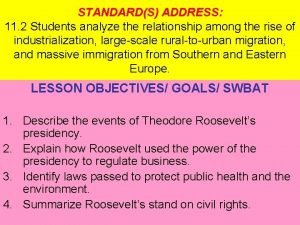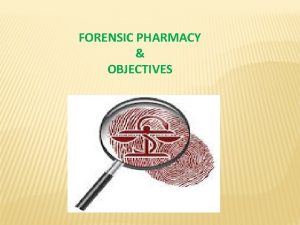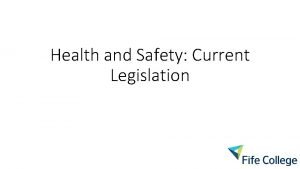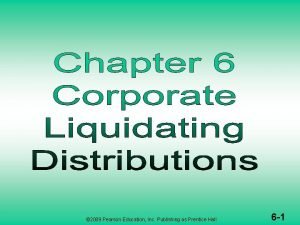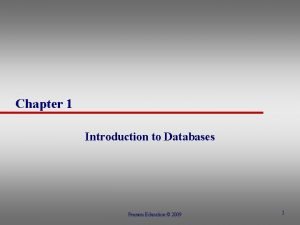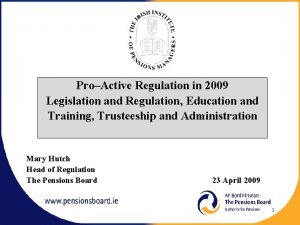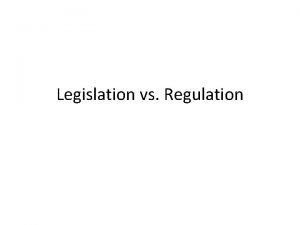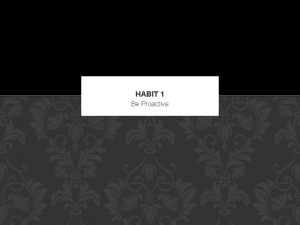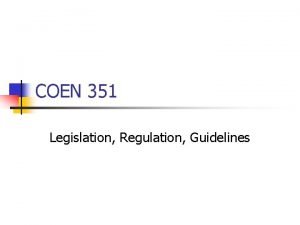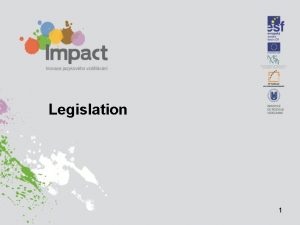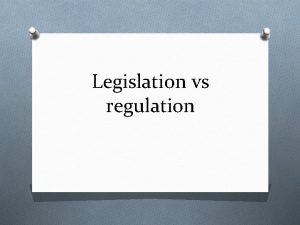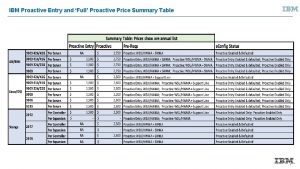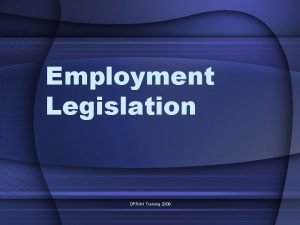ProActive Regulation in 2009 Legislation and Regulation Education














- Slides: 14

Pro–Active Regulation in 2009 Legislation and Regulation, Education and Training, Trusteeship and Administration Mary Hutch Head of Regulation The Pensions Board 23 April 2009 1

PRO–ACTIVE REGULATION IN 2009 Agenda • • Regulation before the Pensions Acts The Pensions Acts 1990 -2008 Pensions Board approach to Regulation Pro–Active Regulation in 2009 Regulation and Trusteeship Regulation and Administration Conclusions 2

REGULATION BEFORE THE PENSIONS ACTS • • • Trust Law and Equitable Principles The Trustee Acts 1893 and 1958 The Trust Documents EU Law Revenue Requirements § Fragmented Regulatory Framework National Pensions Action Campaign 2007 3

THE PENSIONS ACTS 1990 – 2008 § Part I – Preliminary and General § Part II – Establishment of Pensions Board § Part III – Preservation of Benefits § Part IV – Funding Standard § Part V – Disclosure of Information § Part VI – Trustees of Schemes * 1 Part V 1 A - Registered Administrators * 2 Part VII – Equal Treatment *1 Introduced by the Social Welfare and Pensions Act, 2008 *2 Equal Pension Treatment introduced by Social Welfare Act, 2004 4

THE PENSIONS ACTS 1990 – 2008 *3 Part VIII– Compulsory and Voluntary Reporting *3 Part IX – Miscellaneous Applications to the High Court *3 Introduced by the Pensions (Amendment) Act, 1996 *4 Part X – Personal Retirement Savings Accounts (PRSA’s) *4 Part XI – Pensions Ombudsman *5 Part XII – Cross Border Schemes *4 Introduced by the Pensions (Amendment) Act, 2002 *5 Introduced by the Social Welfare and Pensions Act, 2005 § Social Welfare Law Reform and Pensions Act, 2006 § Social Welfare and Pensions Act, 2007 § Social Welfare and Pensions Act, 2008 5

PENSIONS BOARD APPROACH TO REGULATION Historical • Encouraged broad compliance with Pensions Act • Reflected - large number of schemes - lack of previous pensions legislation - policy of encouraging voluntary supplementary pension provision • Heavy reliance on disclosure of information provisions • Gradual move towards stricter policy of expecting full compliance • Required shift from reactive to pro-active approach 6

PENSIONS BOARD APPROACH TO REGULATION Currently • Pro–active approach since 2007 resulting from Operational Review • Reflects - international best practice in supervisory field - need to have regard to principles of regulation - risk based model - direction of resources to most suitable areas • Involves - Supervisory approach based on hierarchy of risk priorities and -Pro–active engagement with regulated entities and their administration providers 7

PENSIONS BOARD APPROACH TO REGULATION Key Objectives • To ensure that : - No pension monies are misappropriated - Beneficiaries receive their full entitlements - Schemes are appropriately funded - Pension assets are appropriately invested - Members are provided with enough information to make appropriate decisions 8

PRO–ACTIVE REGULATION IN 2009 Pensions Board Regulatory Activity • • Aligned to Regulatory Priorities include - Annual interaction with range of schemes – initially largest DB (Level 1 Meetings) - Annual interaction with Administrators/RAs/Pension Providers (Level 1 and Level 2 Meetings ) - Appropriate interaction with all DB schemes failing the funding standard (Correspondence and Level 1/Level 2 Meetings) - Compliance audits -Providers and Schemes - On–the–spot fines investigations - S 18 investigations – on-site and off-site - Prosecutions - where necessary 9

PRO–ACTIVE REGULATION IN 2009 Pensions Board Regulation Function • One supervisory function - Regulation • PRSA supervisory process streamlined and integrated into ongoing provider contact • Scheme registration now comes within Regulation function • Portfolio system adopted for DB schemes/Pension Providers • ‘Open Door’ policy remains 10

PRO–ACTIVE REGULATION IN 2009 Collaboration with other Parties • • • Trustees Revenue Pensions Ombudsman Garda Fraud Squad ODCE re Section 150/Section 160 of the Companies Act CCABI NERA Liquidators Financial Regulator 11

REGULATION AND TRUSTEESHIP • • Much of Board’s regulatory power applies to Trustees Reflects trustees onerous and increasing obligations under Pensions Act Trustee regulation must be matched with support for trustees Trusteeship Review 2007 recommended that : ØAdministrators be regulated ØEmployers be obliged to provide training for trustees • Recommendations implemented in SW and Pensions Act 2008 • On – line training being developed by Board and Trustee Handbook soon available on line • IIPM Trustee Certificate endorsed in Handbook and in Trusteeship Review • 12

REGULATION AND ADMINISTRATION • Trustees heavily reliant on third party administration • Trusteeship Review examined position in detail Ø concluded that scheme administrators (not other service providers) be regulated as no formal qualification existed • RA regime commenced 1 Nov 2008 • Important support for trustees • RAs independently supervised • RAs capable of performing core functions to reasonable standard • IIPM Diploma in Pensions Administration significant contribution to professional standards 13

PRO–ACTIVE REGULATION IN 2009 Conclusions • Regulatory tools available to the Board continue to be developed and fine –tuned • Additional powers allow Board to check compliance of larger number of schemes than before • RA regime very important contribution to efficiency of Board’s regulatory efforts • Direct engagement with trustees and regulated entities proving very useful • Board’s current regulatory approach provides more realistic and visible deterrent to non–compliance with the Pensions Acts • Trustees, Administrators, Providers and Educators all have a role to play in meeting the Board’s expectations of full compliance 14
 Legislation vs regulation
Legislation vs regulation National policy and legislation related to child health
National policy and legislation related to child health Tourism law thailand
Tourism law thailand Thailand former name
Thailand former name What steps did roosevelt take to solve trusts
What steps did roosevelt take to solve trusts Ict ethics and legislation
Ict ethics and legislation Objectives of drug enquiry committee
Objectives of drug enquiry committee Health and safety legislation
Health and safety legislation 2009 pearson education inc
2009 pearson education inc 2009 pearson education inc
2009 pearson education inc 2009 pearson education inc
2009 pearson education inc Copyright 2009 pearson education inc
Copyright 2009 pearson education inc Copyright 2009 pearson education inc
Copyright 2009 pearson education inc Pearson education 2009
Pearson education 2009 2009 pearson education inc
2009 pearson education inc




